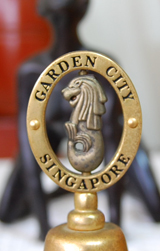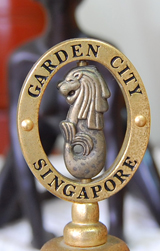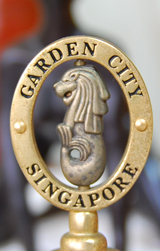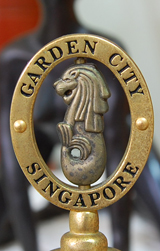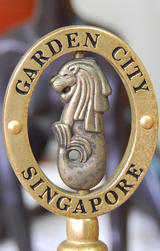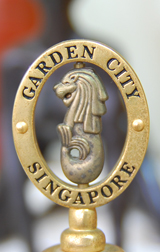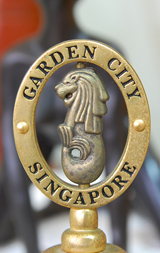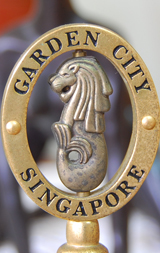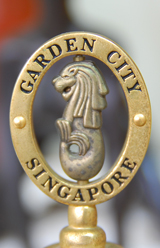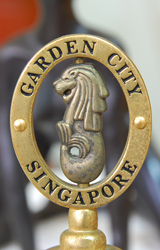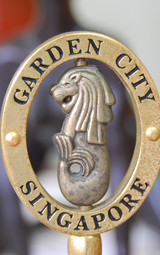The road to nirvana |
|
My journey into Photography, Horology, and Audiophilia |
Tamron SP AF17-50mm F/2.8 XR Di-II LD Aspherical [IF] model A16N II
Faster, faster?
I would like to start by saying that the kit lens AF-S Nikkor 18-55mm f/3.5-5.6 that came with my D40 has superb image quality. While it does not have bells and whistles features such as metal mounting, aperture ring, or internal focusing, it does get the job done. I wouldn't trade my kit lens for another as this has become my reference. My philosophy in buying a lens is match (or get really close to) the kit lens or I don't buy it.
Having said that, having a faster lens do offer some advantages, such as better performance in low light conditions, better isolation of the subject from the background, higher shutter speeds for action shots, and others you can think of to justify the expense of buying a more expensive one.
Again, I had to refer to Fred Miranda's review site to get the pulse of users using lenses in this focal range. My options will be limited to 3rd party lenses that include Sigma, Tokina, and Tamron. I have to be honest that my biases favor the Tamron offering already, so when my friend switching to Canon sold his Tamron lenses, I took a plunge and grabbed this model.
Disappointment
I thought it was soft at f/2.8, period. It can barely match the kit lens at f/3.5 either. I've been having uncomfortable nights because of this disappointment. I tried adjusting every sensible setting on the D40 to compensate, hopefully, to no avail.
I've asked two of my friends who own the same model and they said their copy is fine. Although one has front focusing issue, the owner can compensate because he's using a D300.
Confusion
I made a letter to Tamron Hong Kong in an attempt to have it fixed or replaced (wishful thinking) and I had to get some details from the seller friend. When he learned about it, he told me to just return it to him.
He offered me to swap this A16 for his other Tamron, the SP AF 11-18mm F/4.5-5.6 Di-II LD Aspherical (IF) model A13N, which I wrote about here, that is also in my possession.
At this point, I decided I should try Sigma's own offering. So one Saturday, I headed to JT Photo to purchase the Sigma 18-50mm f2.8 EX DC Macro HSM if it passed my tests. After four different copies, I still can't get one with a "Wow!" factor. Two copies have serious front focus issues, the third one was extremely soft, and the fourth copy which was the best of the bunch, still did not come close to my Nikkor kit lens which was my baseline. In the end, I went home with a D40 battery instead.
I told myself that it's really my fate to keep the kit lens. So my interest shifted to other Nikkor lenses that I can afford, such as the popular "nifty-fifty," the 50mm f/1.8.
Again, I failed. The first copy I tried from Columbia Megamall seems to be mechanically loose and I didn't like the feel of the focus ring when I turn it. I found another copy, from Columbia Cubao, which was perfect in image quality and mechanical performance, but ridiculously priced.
At one point, I even offered to buy the Nikkor 18-135mm kit lens of a friend, to further complicate my confusion.
Finally
While browsing this forum, someone posted a new source offering the Tamron. So I'll cut the chase, and I got one! This time, the copy is really sharp, even wide open at f/2.8. This is what I am looking for in image quality.
Specifications
There is no need to repeat what the manufacturer said here. This is a model that has Di II designation, that means it is optimized for APS-C sized-sensors. This will cause vignetting on a full frame camera.
The build quality
This model belongs to the SP line up, and should be better built than my model A17, and it proves to be so. But I still like the model 272E which I think has the best build quality of all my Tamron lenses.
My manual is written in Japanese, so I just use common sense in the operation of the lens. AF/MF switching is set by sliding a small switch on the side of the lens body. And being a newbie, I was not able to figure out the real purpose of the Lock switch on the other side. Friends told me it's there to prevent lens creep. Sigh of relief.
The zoom ring and focus ring has a nice ribbed rubber, that is soft and provides grip well. I'll need it because the damping is a bit tight, otherwise it has a perfect feel.
The package came with a lens hood, but again, no pouch like the one provided with the model 272E.
The lens cap is pinch type and I prefer it that way.
Performance
The AF speed is not comparable to the kit lens which is silent, and fast. It is noisier due to the micro motor used by Tamron on the N II models of late.
What's nice about having internal focus (the [IF] designation in the model name) is that during auto focus operation, the lens does not change length and the front element does not rotate, which will allow me to use a CPL without much fuss unlike my kit lens where I had to rotate my Hoya CPL every time the lens focuses. The focus ring rotates though, and my hand got in the way on a few occasions.
Test shots
I tested this copy for front and back focusing issues using a focus chart found here.
The specs said the minimum focusing distance is just a bit less than a foot, so I was able to shoot very close to the subject. The following pictures compare the f/2.8 and other aperture settings, compared to that of the kit lens.
Update: I compared the Tamron to the AF-S NIKKOR 17-55mm F/2.8 G here.
Gallery
No flash player!
It looks like you don't have flash player installed. Click here to go to Macromedia download page.
Powered by Flash Gallery
